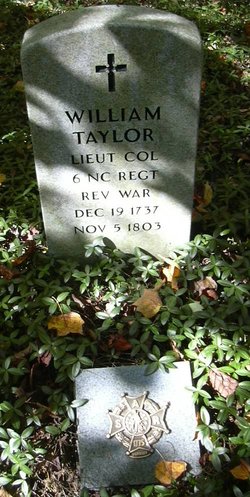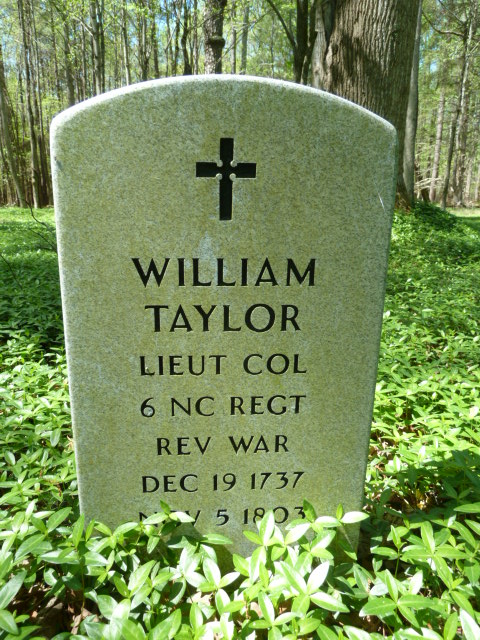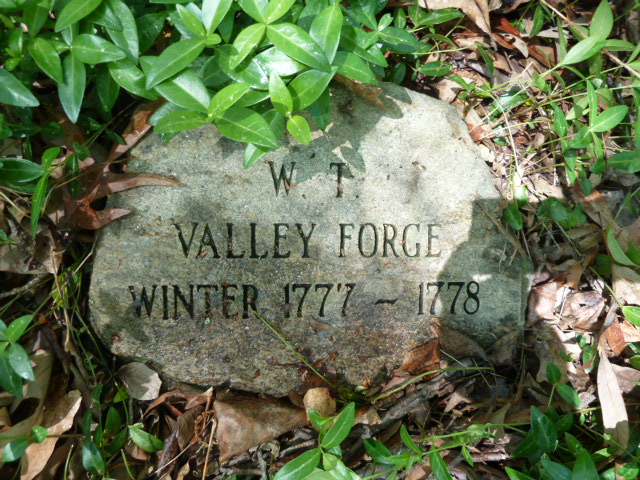6th North Carolina Regiment
Date Established:
Commanders:
Original Officers:
April 15, 1776
Col. John Alexander Lillington
Lt. Col. William Taylor
Col. Gideon Lamb
Col. John Alexander Lillington
Lt. Col. William Taylor
Maj. Gideon Lamb
Known Lt. Colonels:
Known Majors:
Lt. Col. William Taylor
Lt. Col. Gideon Lamb
Lt. Col. Archibald Lytle
Maj. Gideon Lamb
Maj. John Baptiste Ashe
Known Regimental Adjutants:
Benjamin Coffield
Bennett Crafton
William Noble
Known Quarter Masters:
James Johnson
Robert Nelson
Daniel Schaw
Miscellaneous Players:
John Cheesborough - Paymaster
Charles Dixon - Paymaster
Thomas Hart - Commissary
Peter Mallett - Commissary
William McClure - Surgeon
William Moseley - Paymaster
-
Robert Wilson - Surgeon
-
Known Captains:
Andrew Armstrong
John Baptiste Ashe
Francis Child
Arthur Council
Thomas Donoho
George Dougherty
William Glover
John James
Archibald Lytle
Griffith John McRee
George Mitchell
Benjamin Pike
Jesse Saunders
Philip Taylor
Thomas White
-
Daniel Williams
-
Known Lieutenants - Captain Unknown:
Thomas Armstrong
Benjamin Bailey
John Hart
John Owens
-
Joseph Richardson
Known Ensigns - Captain Unknown:
John Cheesborough
Thomas Dudley
Joseph Richardson
Known Sergeants - Captain Unknown:
Robert Griffin
-
Robert Nelson
Known Corporals - Captain Unknown:
-
None
-
Known Privates / Fifers / Drummers, etc. - Captain Unknown:
Robert Cartwright
Thomas Cartwright
John Franklin
Samuel Prise
Anthony Wiles
John Willibough
Brief History of Regiment:
The 6th North Carolina Regiment was authorized April 15, 1776 and assigned to the Southern Department on May 7, 1776.
The 6th North Carolina Regiment was organized during the Spring and Summer of 1776 at Halifax, NC. It included eight companies from the Wilmington and Hillsborough Districts.
On February 5, 1777, it was removed from the Southern Department and assigned to the Northern Department. On July 8, 1777, it was assigned to the NC Brigade, an element of the Northern Department.
On May 29, 1778, Continental Congress ordered the reorganization of all NC regiments due to low numbers in their ranks. The 6th NC Regiment was folded into the 1st NC Regiment. Most historians claim that this was now the end of the 6th NC Regiment, but those assertions are not correct.
With the Legislative authorization of the "New Levies" in 1778, many enlisted men were assigned to the various North Carolina Continental regiments and sent northward. It was soon decided that most men were not needed in the Northern Theater and they were furloughed, with orders to be available when recalled. When the British seized Savannah, GA in late 1778, it was decided to recall all available "New Levies," and these were hastily assembled into the newly-resurrected 5th NC Regiment and 6th NC Regiment by February of 1779. All were marched to South Carolina to join up with Maj. Gen. Benjamin Lincoln, the new commander of the Southern Department.
All company officers of the newly-resurrected 6th NC Regiment were considered to be Militia and none are ever found on any NC Continental rolls. However, many enlisted men do show up in some NC Continental rolls. This situation caused much controversy when men later applied for Federal Pensions in the early 1800s.
Since the "New Levies" were only required to enlist for nine months, the 6th NC Regiment simply dissolved in late 1779, never to be resurrected. With news that the British were sailing south and expected to go after Charlestown once again, the North Carolina leaders decided it was more expedient to recruit new Militiamen instead of Continentals, a mistake they didn't realize until long after Charlestown was captured by the British on May 12, 1780.
The two highest-ranking field officers of the defunct 6th NC Regiment - Col. Gideon Lamb and Lt. Col. Archibald Lytle - continued in service long afterwards. Col. Gideon Lamb continued to help recruit Continentals in the Edenton District, his home, well into 1781. He died on November 8, 1781.
Lt. Col. Archibald Lytle led Militia units at the Seige of Charlestown in late 1779 and early 1780, and he was most likely captured when Charlestown surrendered (records are unclear). He was later captured by the notorious Loyalist, Col. David Fanning, at Hillsborough on September 12, 1781. He was exchanged on February 9, 1782. Soon thereafter, Lt. Col. Archibald Lytle was given control of the 4th NC Regiment upon the total reorganization of the North Carolina Continental Line.
When the Continental Congress resolved that North Carolina reduce the number of men in the field under Maj. Gen. Nathanael Greene to be effective on January 1, 1783, Lt. Col. Archibald Lytle was given control of the last remnants of the NC Continental Line, ostensibly called the 1st NC Regiment. This last unit was furloughed on April 23, 1783 and sent home.
Formation of North Carolina's first two continental regiments was authorized by the Provincial Congress in 1775, in response to a proposal by the Continental Congress to form a Continental Army. After the Battle of Moore's Creek Bridge and later British forays in the lower Cape Fear region in the Spring of 1776, the Continental Congress resolved that North Carolina could raise two additional regiments - the NC Assembly decided to raise four more regiments.
Thus, the 6th North Carolina Regiment was formed on April 15, 1776. It was formed with eight companies from men from the Wilmington and Hillsborough Districts, which made up nearly one-half the state, including much of the backcountry. They were organized at Halifax, NC, under the command of Colonel Alexander Lillington, who had led part of the Militia of the Battle of Moore's Creek Bridge on February 27, 1776.
When ready to march north to join the main army, they were instead called south to defend Charlestown against a suspected second assault in 1776 (after the first attack was repulsed in June). On December 31, 1776, Colonel Lillington resigned due to ill health. He was replaced by Colonel Gideon Lamb on January 26, 1777. The British did not return in 1776. The NC Line spent a miserable winter near Charlestown without the supplies promised by South Carolina.
The 6th NC Regiment marched north in the spring of 1777 and joined the main army, led by Brigadier General Francis Nash. They were in the battles of Brandywine Creek and Germantown in Pennsylvania, being at the Chew House in the latter and serving as rear guard for the American withdrawal during which Brig. Gen. Francis Nash was mortally wounded. They were noted by one diarist as having captured sixteen guns during the attack, but having had to abandon them in the retreat.
They wintered at Valley Forge in Brigadier General Lachlan Macintosh's Brigade (GA). The NC troops were noted by Washington to be the poorest supplied of all the destitute men there. Their desertion rate was ten percent, the lowest in an Army that averaged 18 percent. It was a long way home.
In the reductions of 1778, the 6th NC Regiment was merged with the lst NC Regiment, assuming the lower regimental number. The supernumerary officers of the 6th NC Regiment were sent home to NC to recruit.
Date(s):
Known Battles / Skirmishes:
9/11/1777
Brandywine Creek (PA)
10/4/1777
Germantown (PA)
3/3/1779
Briar Creek (GA)
6/20/1779
Stono Ferry (SC)
Added by Darw
Revolutionary War service dates:
Sixth North Carolina Line
Lt. Col. William Taylor, 15th Apr. 1776 to 1st June 1781.
Source: ALPHABETICAL LIST OF OFFICERS OF THE CONTINENTAL ARMY BY HEITMAN
page 24
6th North Carolina Regiment
Date Established:
Commanders:
Original Officers:
April 15, 1776
Col. John Alexander Lillington
Lt. Col. William Taylor
Col. Gideon Lamb
Col. John Alexander Lillington
Lt. Col. William Taylor
Maj. Gideon Lamb
Known Lt. Colonels:
Known Majors:
Lt. Col. William Taylor
Lt. Col. Gideon Lamb
Lt. Col. Archibald Lytle
Maj. Gideon Lamb
Maj. John Baptiste Ashe
Known Regimental Adjutants:
Benjamin Coffield
Bennett Crafton
William Noble
Known Quarter Masters:
James Johnson
Robert Nelson
Daniel Schaw
Miscellaneous Players:
John Cheesborough - Paymaster
Charles Dixon - Paymaster
Thomas Hart - Commissary
Peter Mallett - Commissary
William McClure - Surgeon
William Moseley - Paymaster
-
Robert Wilson - Surgeon
-
Known Captains:
Andrew Armstrong
John Baptiste Ashe
Francis Child
Arthur Council
Thomas Donoho
George Dougherty
William Glover
John James
Archibald Lytle
Griffith John McRee
George Mitchell
Benjamin Pike
Jesse Saunders
Philip Taylor
Thomas White
-
Daniel Williams
-
Known Lieutenants - Captain Unknown:
Thomas Armstrong
Benjamin Bailey
John Hart
John Owens
-
Joseph Richardson
Known Ensigns - Captain Unknown:
John Cheesborough
Thomas Dudley
Joseph Richardson
Known Sergeants - Captain Unknown:
Robert Griffin
-
Robert Nelson
Known Corporals - Captain Unknown:
-
None
-
Known Privates / Fifers / Drummers, etc. - Captain Unknown:
Robert Cartwright
Thomas Cartwright
John Franklin
Samuel Prise
Anthony Wiles
John Willibough
Brief History of Regiment:
The 6th North Carolina Regiment was authorized April 15, 1776 and assigned to the Southern Department on May 7, 1776.
The 6th North Carolina Regiment was organized during the Spring and Summer of 1776 at Halifax, NC. It included eight companies from the Wilmington and Hillsborough Districts.
On February 5, 1777, it was removed from the Southern Department and assigned to the Northern Department. On July 8, 1777, it was assigned to the NC Brigade, an element of the Northern Department.
On May 29, 1778, Continental Congress ordered the reorganization of all NC regiments due to low numbers in their ranks. The 6th NC Regiment was folded into the 1st NC Regiment. Most historians claim that this was now the end of the 6th NC Regiment, but those assertions are not correct.
With the Legislative authorization of the "New Levies" in 1778, many enlisted men were assigned to the various North Carolina Continental regiments and sent northward. It was soon decided that most men were not needed in the Northern Theater and they were furloughed, with orders to be available when recalled. When the British seized Savannah, GA in late 1778, it was decided to recall all available "New Levies," and these were hastily assembled into the newly-resurrected 5th NC Regiment and 6th NC Regiment by February of 1779. All were marched to South Carolina to join up with Maj. Gen. Benjamin Lincoln, the new commander of the Southern Department.
All company officers of the newly-resurrected 6th NC Regiment were considered to be Militia and none are ever found on any NC Continental rolls. However, many enlisted men do show up in some NC Continental rolls. This situation caused much controversy when men later applied for Federal Pensions in the early 1800s.
Since the "New Levies" were only required to enlist for nine months, the 6th NC Regiment simply dissolved in late 1779, never to be resurrected. With news that the British were sailing south and expected to go after Charlestown once again, the North Carolina leaders decided it was more expedient to recruit new Militiamen instead of Continentals, a mistake they didn't realize until long after Charlestown was captured by the British on May 12, 1780.
The two highest-ranking field officers of the defunct 6th NC Regiment - Col. Gideon Lamb and Lt. Col. Archibald Lytle - continued in service long afterwards. Col. Gideon Lamb continued to help recruit Continentals in the Edenton District, his home, well into 1781. He died on November 8, 1781.
Lt. Col. Archibald Lytle led Militia units at the Seige of Charlestown in late 1779 and early 1780, and he was most likely captured when Charlestown surrendered (records are unclear). He was later captured by the notorious Loyalist, Col. David Fanning, at Hillsborough on September 12, 1781. He was exchanged on February 9, 1782. Soon thereafter, Lt. Col. Archibald Lytle was given control of the 4th NC Regiment upon the total reorganization of the North Carolina Continental Line.
When the Continental Congress resolved that North Carolina reduce the number of men in the field under Maj. Gen. Nathanael Greene to be effective on January 1, 1783, Lt. Col. Archibald Lytle was given control of the last remnants of the NC Continental Line, ostensibly called the 1st NC Regiment. This last unit was furloughed on April 23, 1783 and sent home.
Formation of North Carolina's first two continental regiments was authorized by the Provincial Congress in 1775, in response to a proposal by the Continental Congress to form a Continental Army. After the Battle of Moore's Creek Bridge and later British forays in the lower Cape Fear region in the Spring of 1776, the Continental Congress resolved that North Carolina could raise two additional regiments - the NC Assembly decided to raise four more regiments.
Thus, the 6th North Carolina Regiment was formed on April 15, 1776. It was formed with eight companies from men from the Wilmington and Hillsborough Districts, which made up nearly one-half the state, including much of the backcountry. They were organized at Halifax, NC, under the command of Colonel Alexander Lillington, who had led part of the Militia of the Battle of Moore's Creek Bridge on February 27, 1776.
When ready to march north to join the main army, they were instead called south to defend Charlestown against a suspected second assault in 1776 (after the first attack was repulsed in June). On December 31, 1776, Colonel Lillington resigned due to ill health. He was replaced by Colonel Gideon Lamb on January 26, 1777. The British did not return in 1776. The NC Line spent a miserable winter near Charlestown without the supplies promised by South Carolina.
The 6th NC Regiment marched north in the spring of 1777 and joined the main army, led by Brigadier General Francis Nash. They were in the battles of Brandywine Creek and Germantown in Pennsylvania, being at the Chew House in the latter and serving as rear guard for the American withdrawal during which Brig. Gen. Francis Nash was mortally wounded. They were noted by one diarist as having captured sixteen guns during the attack, but having had to abandon them in the retreat.
They wintered at Valley Forge in Brigadier General Lachlan Macintosh's Brigade (GA). The NC troops were noted by Washington to be the poorest supplied of all the destitute men there. Their desertion rate was ten percent, the lowest in an Army that averaged 18 percent. It was a long way home.
In the reductions of 1778, the 6th NC Regiment was merged with the lst NC Regiment, assuming the lower regimental number. The supernumerary officers of the 6th NC Regiment were sent home to NC to recruit.
Date(s):
Known Battles / Skirmishes:
9/11/1777
Brandywine Creek (PA)
10/4/1777
Germantown (PA)
3/3/1779
Briar Creek (GA)
6/20/1779
Stono Ferry (SC)
Added by Darw
Revolutionary War service dates:
Sixth North Carolina Line
Lt. Col. William Taylor, 15th Apr. 1776 to 1st June 1781.
Source: ALPHABETICAL LIST OF OFFICERS OF THE CONTINENTAL ARMY BY HEITMAN
page 24
Family Members
-
Mary Elizabeth Taylor Penn
1718–1757
-
Catherine Taylor Penn
1719–1759
-
Ann Pendleton Taylor Sandidge
1721–1761
-
Edmund Taylor
1723–1808
-
![]()
COL John Taylor Jr
1727–1787
-
James Taylor
1729–1750
-
Sarah Taylor Stevenson
1730–1820
-
Philip Taylor
1732–1765
-
Elizabeth Taylor Lewis Bullock
1735–1816
-
![]()
Col Joseph Taylor
1742–1815
-
Jeremiah Taylor Sr
1758–1858
Advertisement
Explore more
Sponsored by Ancestry
Advertisement









